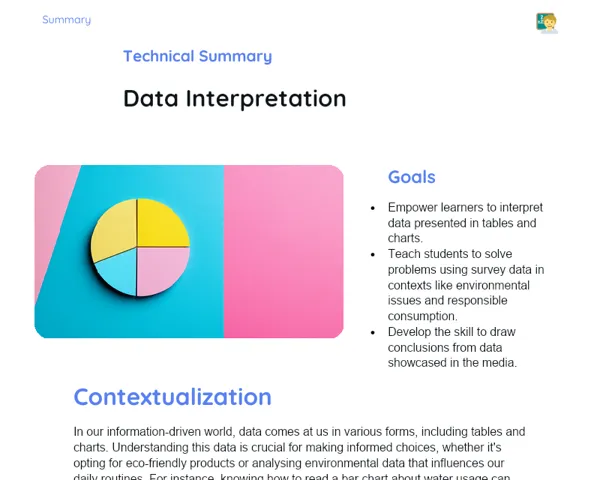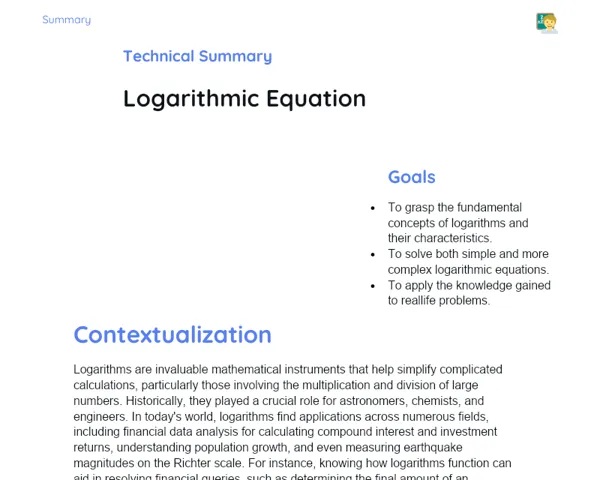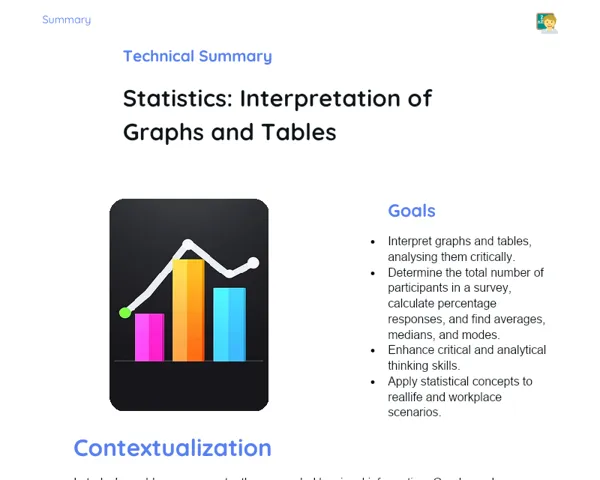Goals
1. Understand the connection between fractions and decimal numbers.
2. Build the ability to convert decimal numbers into fractions and vice versa.
3. Address practical scenarios that involve converting between fractions and decimal numbers.
Contextualization
Fractions and decimal numbers play a vital role in our day-to-day activities. Whether it's sharing a 'slice of pizza' with mates, calculating the change when shopping, or measuring ingredients while cooking, knowing how to convert between fractions and decimal numbers is an essential skill. Understanding this connection can help us be more precise and efficient in various everyday and professional settings. For example, while following a recipe, you might encounter measurements in fractions, like '1/2 a cup of oil', and in decimals, such as '0.75 of a cup of milk'. Knowing how to switch between these two makes it easier to work out the necessary amounts.
Subject Relevance
To Remember!
Concept of Fractions
Fractions signify parts of a whole. They're expressed in the form a/b, where 'a' is the numerator and 'b' is the denominator. The numerator tells us how many parts we have, while the denominator shows how many equal parts the whole has been divided into.
-
Numerator: the top part of the fraction indicating how many parts we possess.
-
Denominator: the bottom part that indicates how many equal parts the whole has been split into.
-
Example: 1/2 shows half of something, meaning the whole has been split into 2 equal parts and we have 1 of those parts.
Concept of Decimal Numbers
Decimal numbers provide a numerical representation that utilizes a decimal point to distinguish the whole number from the fractional part. They're commonly used to represent fractions in a more straightforward way, especially in financial calculations and measurements.
-
Decimal Point: separates the whole number from the fraction.
-
Whole Part: the portion of the number to the left of the decimal point.
-
Fractional Part: the portion of the number to the right of the decimal point.
-
Example: 0.75 represents 75 hundredths or 75/100.
Methods for Converting Fractions to Decimal Numbers
To turn a fraction into a decimal, simply divide the numerator by the denominator. For instance, to convert 1/4, divide 1 by 4, yielding 0.25.
-
Direct Division: divide the numerator by the denominator.
-
Example: 1/4 = 1 ÷ 4 = 0.25.
-
Using a Calculator: can make division simpler for more complex fractions.
Methods for Converting Decimal Numbers to Fractions
To convert a decimal into a fraction, write it as a fraction with a denominator of 10, 100, 1000, etc., and simplify if applicable. For example, 0.75 can be expressed as 75/100, which simplifies to 3/4.
-
Write as a Fraction: place the decimal over 10, 100, 1000, etc.
-
Simplification: reduce the fraction to its smallest form.
-
Example: 0.75 = 75/100 = 3/4.
Practical Applications
-
Cooking: Converting measurements while following recipes that use fractions and decimal numbers.
-
Engineering: Important for precise calculations in designs and constructions.
-
Finance: Necessary for converting monetary amounts and dealing with interest calculations in accounting.
Key Terms
-
Fractions: Parts of a whole shown in the form a/b.
-
Decimal Numbers: Numbers using a decimal point to separate the whole from the fractional.
-
Numerator: Top part of the fraction showing how many parts are present.
-
Denominator: Bottom part indicating how many equal sections the whole is divided into.
-
Direct Division: A method to convert fractions to decimals by dividing numerator by denominator.
-
Simplification: Reducing a fraction to its smallest equivalent.
Questions for Reflections
-
How can the ability to convert fractions to decimal numbers assist you in your daily life?
-
Which professions do you think most commonly use the conversion between fractions and decimal numbers? Why?
-
Recall an instance when you had to convert between fractions and decimal numbers. How did this skill make your task easier?
Real-Life Conversion Challenge
This mini-challenge helps to reinforce understanding of converting between fractions and decimal numbers through a practical exercise.
Instructions
-
Identify an item or scenario in your daily life where you can find a measurement that can be expressed as both a fraction and a decimal number. This may be a recipe, a length measurement, or a purchase.
-
Document the measurement in both formats: fraction and decimal.
-
Clarify the conversion process you employed to switch from one form to another.
-
Share your discoveries with a friend or family member and have a discussion on how this skill might be useful in other everyday circumstances.



